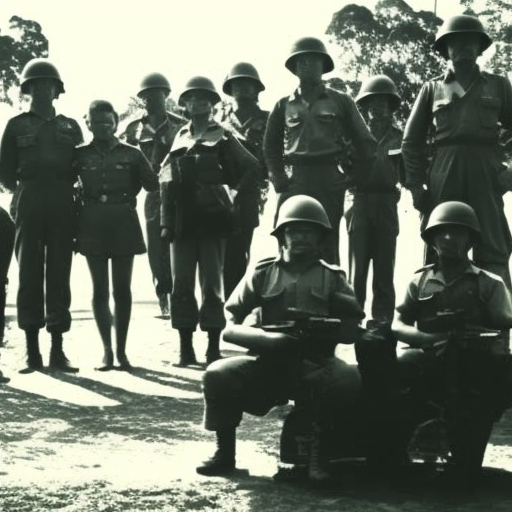Military history of Australia during the Vietnam War
The military history of Australia during the Vietnam War is characterized by the country’s involvement in the conflict as part of the United States-led coalition. Australia’s participation in the war lasted from 1962 to 1972 and involved a significant commitment of troops and resources.
Australia’s initial involvement: In 1962, Australia deployed a small number of military advisors to South Vietnam to assist the South Vietnamese government in its fight against the communist forces of North Vietnam. This marked the beginning of Australia’s direct involvement in the conflict.
Expansion of Australian forces: Over the next few years, Australia gradually increased its military commitment to Vietnam. In 1965, the Australian government decided to send a combat battalion to Vietnam, and by 1966, the number of Australian troops had reached around 6,000. The Australian forces were primarily involved in counterinsurgency operations, conducting patrols, and engaging in combat with the Viet Cong.
Battles and operations: Australian troops were involved in several major battles and operations during the Vietnam War. One of the most significant engagements was the Battle of Long Tan in 1966, where a small Australian force successfully repelled a much larger Viet Cong attack. Other notable operations included Operation Crimp, Operation Bribie, and Operation Coburg.
Role and tactics: The Australian forces in Vietnam operated as part of the larger American-led coalition. They were primarily tasked with securing and defending key areas, conducting search and destroy missions, and providing support to South Vietnamese forces. Australian troops employed a combination of conventional warfare tactics and counterinsurgency techniques to combat the guerilla warfare tactics of the Viet Cong.
Impact and casualties: Australia’s involvement in the Vietnam War had a significant impact on the country. The war divided public opinion, with some supporting the government’s decision to participate and others opposing it. The conflict also led to protests and demonstrations against the war, particularly towards the later stages of Australia’s involvement.
By the end of the war: Australia’s military involvement in Vietnam came to an end in 1972. Over the course of the war, approximately 60,000 Australian personnel served in Vietnam, with the majority being conscripts. The war resulted in the deaths of 521 Australian servicemen, while many others were wounded or suffered long-term physical and psychological effects.
Legacy and commemoration: The Vietnam War had a lasting impact on Australia’s military and society. It led to changes in defense policy and the way the country approached future conflicts. The war also had a profound effect on the veterans who served in Vietnam, with many experiencing difficulties in readjusting to civilian life. In recent years, efforts have been made to recognize and commemorate the service and sacrifice of Australian Vietnam War veterans.
In conclusion, the military history of Australia during the Vietnam War saw the country’s significant involvement in the conflict as part of the United States-led coalition. Australian forces played a crucial role in various battles and operations, employing a combination of conventional warfare tactics and counterinsurgency techniques. The war had a profound impact on Australia, both in terms of public opinion and the experiences of the veterans who served. The legacy of the Vietnam War continues to be remembered and commemorated in Australia today.












